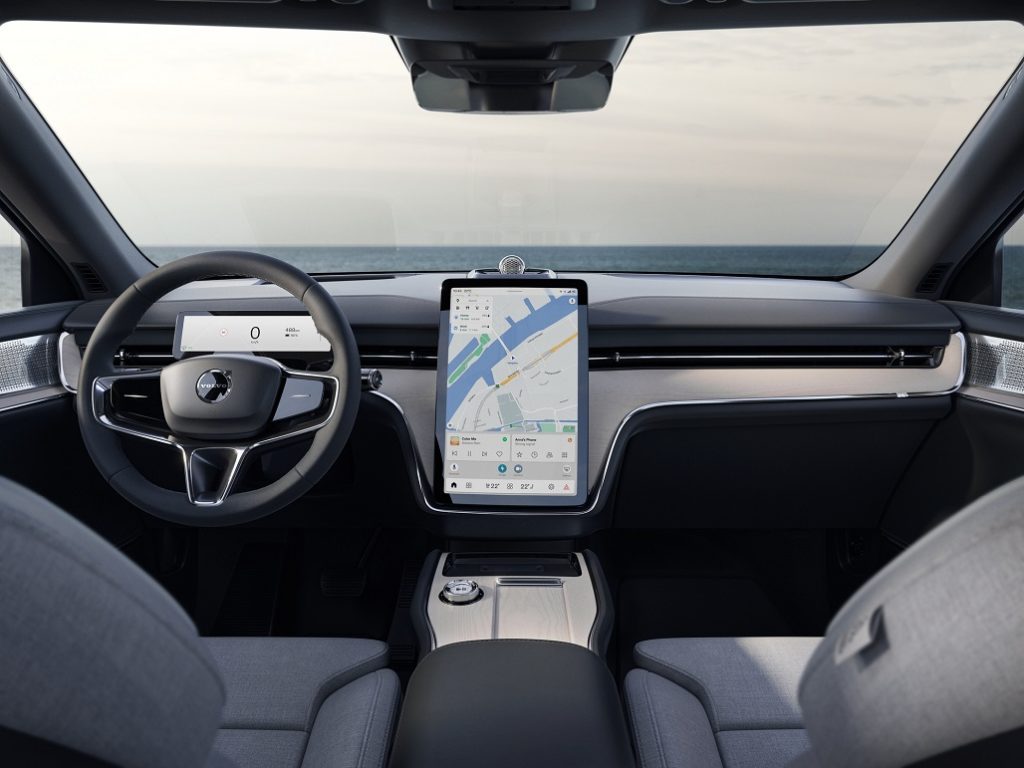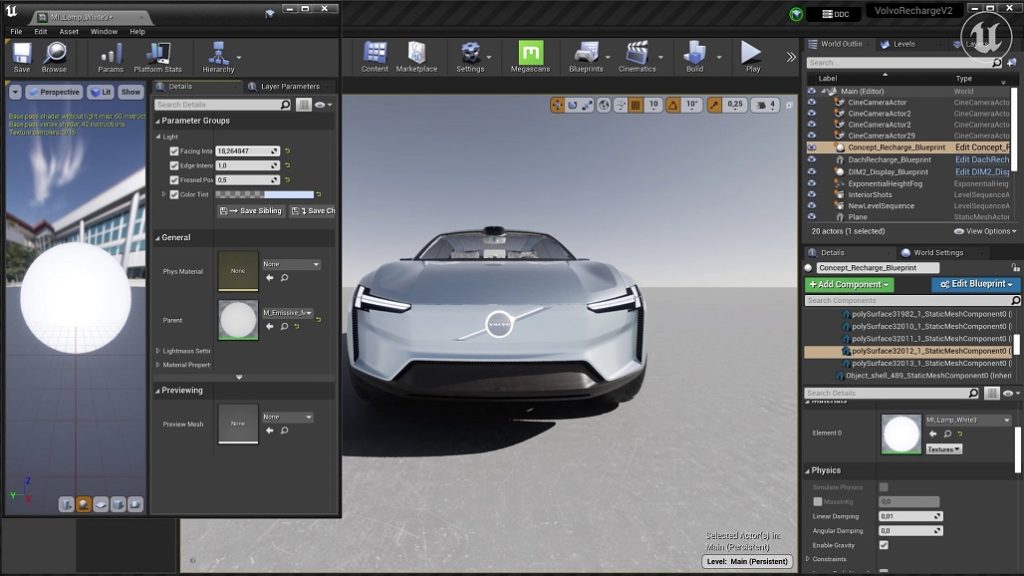New Volvo EX90 with Unreal Engine introduces the future of automotive HMI
Integrating real-time, 3D visualisation and cloud integration brings the world into the car
- First European car with Unreal Engine
- First Volvo car built on an all-electric platform
- First Volvo car that is hardware ready for autonomous driving in the future
- New HMI-enabled safety and convenience features
- “We can now do things we could never achieve with traditional HMI” Volvo Cars
9th November 2022: A state-of-the-art implementation of Unreal Engine from Epic Games will power the Human Machine Interface (HMI) of the new, fully electric Volvo EX90. Combining cloud connectivity with an ability to deliver photorealistic, real-time 3D content will revolutionise the role of the in-car HMI, allowing Volvo Cars to introduce a growing range of new features.
“The Volvo EX90 is a significant step in technology for Volvo Cars, and not only because it is the first vehicle to be designed around our new all-electric platform,” states Thomas Stovicek, Volvo Cars Head of User Experience. “It also begins our journey to much higher levels of engagement with drivers and passengers through a range of new features, many of which are still just ideas, but which we can now develop quickly and push to existing vehicles with Unreal Engine.”
At the heart of the Volvo EX90 is a core system powered by NVIDIA DRIVE AI platforms Xavier and Orin, with in-house developed software by Volvo engineers and a Qualcomm Snapdragon processor. Running on the latter, Unreal Engine provides a highly efficient, compact implementation of lightning-fast graphics for the in-car screens and head-up display. The 15-inch centre screen controls what Volvo Cars says will be one of the best infotainment systems on offer, with Google built-in providing access to services that include Google Maps navigation, the Google Play Store and Google Assistant for voice control.
“Real-time, game-quality graphics enabled by Unreal Engine allows us to do things we could never achieve with developments of traditional HMI technologies,” states Stovicek. “We are seeing it as the beginning of a new generation of HMI that offers much broader opportunities for Volvo Cars.”
An HMI that enhances safety and convenience
With built-in LiDAR as standard and other advanced sensors, the Volvo EX90 provides very high levels of active safety and is the first Volvo that’s hardware-ready for unsupervised autonomous driving in the future. The quality of the HMI is one of the factors in making these high levels of intervention feel natural and comfortable for the driver, with minimum cognitive stress. “Drivers feel more comfortable with automated systems if they can see what the systems are seeing and agree with the interventions,” explains Heiko Wenczel, Unreal Engine automotive director at Epic Games. “Differences between reality and the display can require the driver’s brain to close the gap, translating one onto the other. This increases the cognitive load and means the driver’s eyes are off the road for longer than they should be if not in fully autonomous mode. Real-time visualisation makes a significant contribution to eliminating this disparity and any equally stressful latency.”
Another example is terrain crossing: the Volvo EX90 will be available with All Wheel Drive. Real-time HMI can build on data from sensors, RADARs and cameras to bring additional information to the driver, allowing better decisions to be made with additional reassurance. The HMI’s high speed also allows real-time, lag-free layering of road information onto the head-up display, making functions such as vision support for poor conditions feel more natural.
“With so many new ideas to explore and bring to market, we are also pleased with the benefits to the speed and efficiency of our HMI development processes,” highlights Volvo’s Stovicek. Central to this is the closer relationship between designers and engineers that is facilitated by Unreal Engine’s ease of use. “We no longer have to develop the HMI functionality in a time-consuming iterative process,” he continues. “Unreal Engine’s intuitive visual scripting and C++ capability provides a seamless workflow from concepts to production, bringing designers and engineers together in a single space where their ideas can flourish.”
Stovicek says the new EX90 is the first Volvo car to truly be defined by its software. “It will be part of a wider ecosystem, connecting to your home and your other devices,” he explains. “The Volvo EX90 is the start of something new for Volvo Cars in many ways.”
Unreal Engine also provides a host of functionality that is new to automotive but thoroughly proven in the games industry. Epic’s Heiko Wenczel says key features include complete multiuser scalability, high-speed two-way data communications to and from the cloud and integrated data security systems. This allows vehicle manufacturers to download new functionality to existing vehicles as it becomes available and to provide services on-demand.
“Real-time, highly responsive, driver-friendly HMI will be a vital element in the next phase of automotive development,” concludes Wenczel. “With more connectivity, more active safety features, more convenience features and potentially the ability for drivers to do other things while the car drives unsupervised, HMI technology is becoming a key enabler of the future.”

